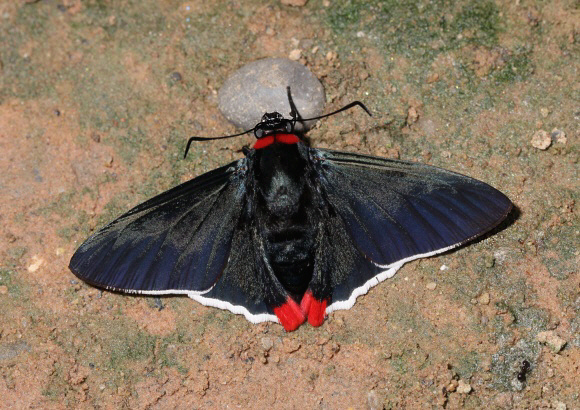
Introduction
The subfamily Pyrrhopyginae comprises 163 known species, most of which are found only in the tropical rainforests and cloudforests of South America, although a few reach as far north as Mexico, and a single species reaches Arizona. They are characterised by having bodies which are very large in proportion to the wings. Other characteristics include a massive muscular thorax, compressed abdominal segments, prominent eyes, and antennae with recurved clubs.
The tribe Passovini includes 26 species, placed within the genera Aspitha, Azonax, Granila, Myscelus and Passova. The genus Aspitha comprises 4 species – aegenoria, aspitha, bassieri and leander.
The butterflies are strongly reminiscent of Pyrrhopyge, having triangular black wings with white fringes, and red markings on the head and the abdominal tip. Unlike Pyrrhopyge, both Aspitha and Passova also have red stubby ‘tails’ on the hindwings. Passova have red faces, whereas Aspitha have black faces with a red collar.
Aspitha aegenoria is found from Colombia to Surinam, and south along the eastern slopes of the Andes to Peru and Bolivia. It has 3 described subspecies.
Habitats
This species is found in well forested areas at altitudes between about 200-800m.
Lifecycle
To be completed.
Adult behaviour
Males are usually seen when discovered on the ground imbibing mineralised water from damp soil or urine-tainted sand, often in company with Phocides, Jemadia, Elbella, Passova, Pyrrhopyge and other large dark Hesperiids.
